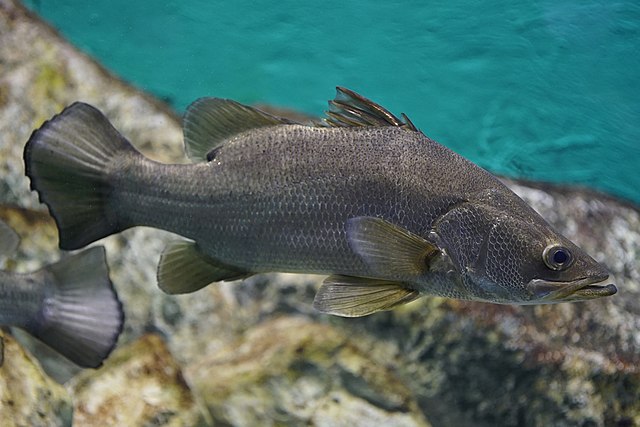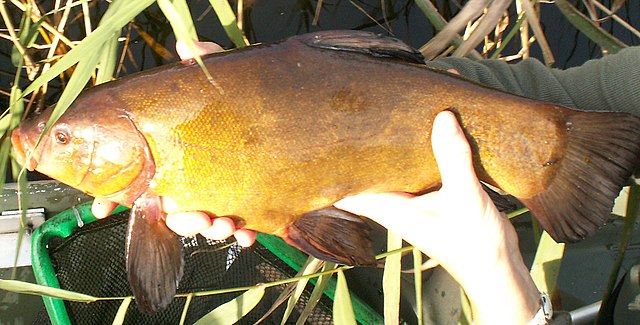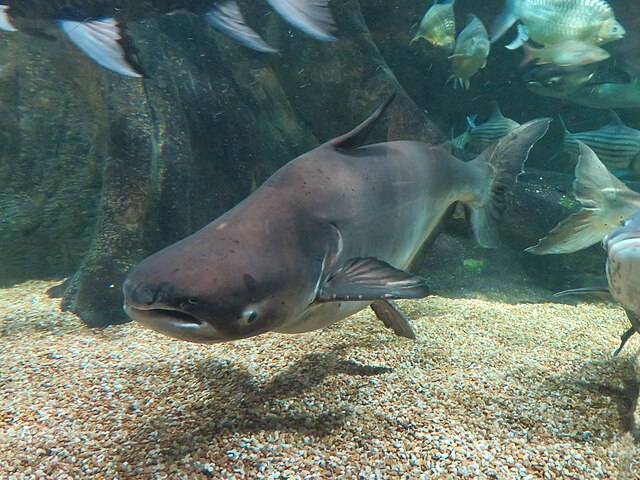The Nile perch, also known as the African snook, Goliath perch, African barramundi, Goliath barramundi, Giant lates or the Victoria perch, is a species of freshwater fish in family Latidae of order Perciformes. It is widespread throughout much of the Afrotropical realm, being native to the Congo, Nile, Senegal, Niger and Lake Chad, Volta, Lake Turkana, and other river basins. It also occurs in the brackish waters of Lake Maryut in Egypt. The Nile perch is a fish of substantial economic and food-security importance in East Africa. Originally described as Labrus niloticus, among the marine wrasses, the species has also been referred to as Centropomus niloticus. Common names include African snook, Victoria perch, and many local names in various African languages, such as the Luo name mbuta or mputa. In Tanzania, it is called sangara, sankara, or chenku. In Francophone African countries, it is known as capitaine. Its name in the Hausa language is giwan ruwa, meaning "water elephant".

Nile perch
Nile perch can grow to 2 m (6 ft 7 in) and 200 kg (440 lb).
Image: Capitaine Nile Perch
Freshwater fish are fish species that spend some or all of their lives in bodies of fresh water such as rivers, lakes and inland wetlands, where the salinity is less than 1.05%. These environments differ from marine habitats in many ways, especially the difference in levels of osmolarity. To survive in fresh water, fish need a range of physiological adaptations.
Tench are common freshwater fish throughout temperate Eurasia.
Sturgeon are found both in anadromous and fresh water stationary forms
The critically endangered Mekong giant catfish
Dams can create issues for freshwater habitats.







